Russell Brice is a legend on Everest. He came to notoriety on the Discovery Channel’s “Everest Beyond the Limits” series about 10 years ago. But few people know that Russ is a world-class climber in his own right.
Born in New Zealand in 1952, he now lives in London. He started climbing as a young boy in New Zealand and soon found his way to the Himalayas and Alps. Back in 2011, I sat down with Russ for a long conversation. Since then we have had many such opportunities to talk about his climbing experiences, Everest, trends and dangers including last year during my Lhotse attempt.
When I asked Brice about the Discovery series he told me he wished he had not done these shows, they had not helped his business. He felt they were edited for drama and reflected poorly on some individuals. The David Sharp incident came to mind as we discussed the pros and cons of global exposure.
Brice made it clear that he did more than any other expedition operator would have to try to save Mr. Sharp given he was not a Himex member. He sent his own Sherpas back up the North side in 2006 with oxygen, he took Sherpas away from his own climbers on their summit bid to provide assistance and he met with Mr. Sharp’s parents in London to return his personal items at his own expense. Brice, looked at his shoes as he told me these stories, sighing occasionally. It reminded me of the saying the no good deed goes unpunished.
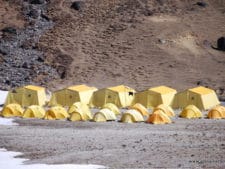 We spoke of death on the mountain and while he has seen many deaths of personal friends while climbing, he had experienced only one death in all his years of guiding, a junior Sherpa in 2006 from altitude sickness. Again, he became reflective as he spoke. He told me of sending two of his members back home early on an expedition after heart conditions surfaced. I asked Brice if he felt like he was God sometimes – “Not God, but these people pay me to give them a chance to climb Everest and not die. And I take that responsibility seriously.” He responded.
We spoke of death on the mountain and while he has seen many deaths of personal friends while climbing, he had experienced only one death in all his years of guiding, a junior Sherpa in 2006 from altitude sickness. Again, he became reflective as he spoke. He told me of sending two of his members back home early on an expedition after heart conditions surfaced. I asked Brice if he felt like he was God sometimes – “Not God, but these people pay me to give them a chance to climb Everest and not die. And I take that responsibility seriously.” He responded.
I moved on to ask him about the evolution of climbing Everest. Brice’s first commercial expedition to Everest was on the north side in 1994. He personally has 14 summits of 8,000m mountains, including two Everest summits under his belt. He summited Aconcagua a few months ago at age 64. One climb few remember was in 1988 attempt via the never before climbed Three Pinnacles on Everest’s northeast ridge. He knows what he is talking about.
I asked about the location of camps on the north side, the acclimatization schedule most teams use today and the routes we all use. He surprised me with his candid answer of “we made it up as we went along early on the north side.” I was expecting something more analytical. He said of the high camps on the north side, they ended up where they are because that was where the Sherpas ran out of line, or out of daylight. They moved a bit over time but are basically in the same spots that Mallory and Irvine used in 1924.
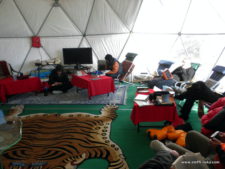
Today, he prides himself on looking for new ways to climb Everest, such as using Lobuche for acclimatization.
His Base Camp is legendary with the Tiger Dome tent complete with a big screen TV and espresso machine. In 2012 I did a post on how he runs his camps and why his members love it and are willing to pay a premium for hs expertise.
So, whats up for 2017 with Mr. Brice and how does he feel about all the new trends being publicized in the financial press on how to take short cuts to summit Everest.
Q: What are your expectations of the season – crowds, weather, surprises from the Nepal Government (Ministry of Tourism – MoT)?
I think that success on Everest last year was very important to regain confidence from climbers that the mountain was as safe as it ever can be, and that the route had not changed drastically, so I suspect that it will be busy on the mountain again, especially from the many new local Nepal companies.
I see that the monsoon has already started to form so I will not be surprised if we have warm general temperatures on the mountain again this year. I personally feel that the freezing level is getting higher (in altitude) every year, hence we are seeing some radical changes in snow pack and ice formations. Something that we as mountaineers around the world need to be aware of and take note that routes are changing and so our decision making also needs to take note of this.
Who knows what the MoT will be like this year, as the people there change so often, and in fact now the government is on an eight month rotation, so we have very little idea of who might be in charge. We will see !!!
Of note is that Foreign Operators have at last been accepted as Associate Members to the Expedition Operators Association (EOA) in Nepal.
I also heard that the SPCC Icefall Doctors are aiming to fix the Icefall earlier this year, which will hopefully mean that we can fix the summit rope earlier and that we can have an earlier summit period. What we are all concerned about is that by the end of May all the protection equipment is melting out on the route through the icefall, so we have many complaints from climbers about safety (but of course not much help in replacing gear).
Q: What changes are you asking the MoT for Everest 2017? Such as using helicopters to ferry gear into the Cwm.
We as the EOA have been asking the MoT for permission to fly all the rope fixing gear to C1 so as to avoid 78 Sherpa loads through the Icefall for several years. Last year we finally received this permission for a 3 year trial period. It worked quite well last year, but really we needed the loads to be dropped at C2 as there is more definition by dropping the loads onto moraine rather than white ice, but also it was quite confusing to get the loads carried from C1 to C2, plus we lost a lot of equipment as this was sitting out in the open and it seems that various people helped themselves to ice screws and the like. By dropping directly at C2 we will have much better control of who is taking what and where. We have permission to do that this year.
Every year we refine how this rope fixing is done and it is getting more efficient and this year we have new suppliers who are supplying the same quality gear at cheaper prices, which is good. But there will be a $50 per person increase on the rope fixing as up until now the Sherpas are only paid bonuses and not daily wages, so the teams that supply the rope fixing Sherpas are in effect subsidising all the teams that do not supply rope fixing Sherpas. But in 2014 and 2015 we lost a lot of communal rescue equipment such as shovels, skeds and the like which we would really like to replace, as we see the importance of having this equipment on hand when we have major emergencies.
Q: Do you expect the mountain to be more or less crowded than last year? If more, any thoughts on how to manage your team to avoid those crowds?
As mentioned above, I am sure it will be more busy than last year.
Over recent years many of the operators have co-ordinated summit days at BC and are working together to share expected numbers and dates. I am sure that will happen again. And of course we all hope that we have extended weather envelopes that means everyone is not looking for just the same days.
How I will manage my own team will depend on what I see happening at BC, and followed by discussions with my guides and Sherpa staff.
Q: The mountain has been changing over the past several years. You and I discussed how crevasses seemed to be accelerating in the Cwm. Is there anything you will be looking at this year as an indicator of things to come?
Yes indeed. I recently received information from Metotest which proves that 2015 was the warmest year in world history and that we had two significant warm periods in the Himalaya. One of these was when I was on K2 which explains why we had waist deep snow at 7,500m on K2 and Broad Peak. Then again later in the season we had the same waist deep unconsolidated snow on Manaslu. I personally suspect that this was quite old snow transforming for the first time due to the rise in general temperature for the first time at this altitude.
Then when you looked at the mountains in the spring season of 2016 they looked kind of sad as so many of the lower slopes now no longer hold snow and what snow is there is covered in small rocks left from the melting process. Also noticeable on Manaslu is that where we have the very first safety rope over the rock bulge going to crampon point had 30m of ice right beside it in 2008. Now that glacier is more than 100m below this rock bulge and every year we make our crampon point about 20 to 30m further up the hill. The glacier immediately behind the BC which was at least 30m thick in 2008 has now almost gone and is probably no more than 5m thick.
But on Everest looking at photos from above, it seems that the Icefall between BC and C1 is actually getting easier and arguably safer. It also seems that several of the hanging glaciers above the Icefall are now leaning back and seem to be less active than what we experienced in 2012, again this can be explained by the warm temperatures at this altitude.
However it seems to me that the crevasses between C1 and C2 are getting deeper and are now longer which results in climbers having to walk longer distances as they zig zag through these crevasses, and of course this has also resulted in some longer ladder crossings over very deep crevasses. I will not be surprised to see that we will need more ladders between C1 and C2 than before. Maybe even at the bottom of the Lhotse Face as well.
For the first time EOA have bought foreign ladders as we see that we need better quality ladders on Manaslu and we may also need some on Everest in the future.
Q: Tell us about using Lobuche for acclimatization. How many rotations does that eliminate thru the Icefall for Sherpas and members? How many nights do you spend above BC on Lobuche? The logistics of setting up 2 camps – EBC and LBC seem like a lot work, how do you justify the time and money?
Since I moved from Tibet to Nepal with my Everest expeditions I have always been doing part of my acclimatisation on Lobuche. This means that members will only make 2 return trips through the Icefall. The first trip for acclimatisation and the second trip for the summit. I certainly do not promote using the Icefall as an acclimatisation venue. Members are moving far too slowly, and often they are accompanied by Sherpas who really do not need to be spending this extra time in the Icefall.
But also it means that members spend less time at C2, so that means that I do not need to carry so much food / fuel up to C2, or rubbish back down, which again saves many loads that the Sherpas have to carry through the Icefall. Since 2014 the SPCC have given operators permission to leave equipment at C2 from one season to another, so this has drastically reduced the number of Sherpa loads of just carrying tent poles and the like up and down every year. Now it is mainly oxygen / food and fuel. We prepare all our C2 and above meals at BC so as they only need to be heated at C2, which saves considerably on fuel and also on waste that has to be carried back down.
Maybe I am old fashioned, but I believe in a solid relatively slow acclimatisation process, but my success record actually proves that this works. Yes I still like to take 10 days to walk into BC (5,200m) where we spend 4 nights with an ascent of Kala Pattar (5,500m) and we also set up a practice route over crevasses, up and down head walls and the like so as everyone can practice the various ladder skills required in the Icefall. We then return to Lobuche BC and the next day go to Lobuche C1 (5,500m) and spend a night there, the next day we climb to the East Summit (6,120m) and return to LBC. This is a good opportunity to check boots, crampons, and how members deal with fixed ropes, but on relatively safe terrain. After one rest day we then climb directly from LBC to the East Summit of Lobuche and camp there. This is a rather strenuous day which helps with acclimatisation but is also good training for the future trips through the Icefall. Very few people actually reach the true summit of Lobuche as the ridge is quite exposed and too far for most people to climb from C1. So we do take the effort to fix a route to the Central Lobuche Summit. Again this is good practice for the ridge between South Summit and the Hillary Step on Everest, and camping for two nights at 6,120m is very beneficial, again good practice for camping on the Lhotse Face later on, but in a relatively safe environment. We spend a second night in this camp, making sure that we leave no rubbish or even human waste as we carry this all back down to LBC. The final part of this acclimatisation is packing cold tents before descending to LBC for breakfast and then back to EBC for lunch. But also Lobuche affords some of the best views of Everest and surrounding peaks, especially at sun rise and sun set.
Lobuche peak fee used to be something like $80 but now the NMA have put the fee up to $380 per person which is a bit disappointing as it just targets operators like us who use this summit for acclimatisation, at the same time as reducing traffic through the Icefall. And of course several people complain that we camp on the East Summit, but there are in fact no rules that say one is not allowed to camp there, and if you really want to reach the main summit you need this camp. So yes there is a cost implication on this program, but in my mind it is worth that, as it just saves so much time by members and Sherpas in the Icefall.
How this acclimatisation helps on Everest is that now our members can go in one day from BC to C2 (6,400m) to start their next acclimatisation process of going to C3 (7,400m) for one night on the Lhotse Face. C1 (6,100m) is not the safest camp on the mountain and has a reasonable danger from hanging glaciers from Everest as well as Nuptse, so although I put a camp there for emergency, we try not to use it. (Although we may be forced to used C1 again if the route between C1 and C2 becomes more difficult).
The time on Lobuche is about the same as other teams spend acclimatising through the Icefall. We also use our own Lobuche BC during the walk into BC, going directly to EBC from there which means we do not stay in Lobuche or Gorak Shep villages, so from early on we are using our own infrastructure, at the same time creating employment for my Sherpa and cook team.
Q: The non-climbing press seems to be infatuated with stories about altitude tents, using a helicopter instead of trekking into base camp and cutting expedition times in half for, in some cases charging 25% more money for members. Russ, in your answer of your use of Lobuche for acclimatization and only having your members do two rotations thru the Icefall, you called it “old school” What are your thoughts on the other techniques and do you agree with what Ed Viesturs once said that there are “no shortcuts to the top?”
This is an interesting question. Of course one needs to be open to new ideas in an advancing world. Over the years there have been several attempts to try and reduce time spent on expedition. The French tried by doing strenuous training at altitudes up to 4,000m and this proved to be relatively successful.
I tend to think that there is no training like actually climbing mountains to prepare oneself for expedition. So if it is possible to climb or ski at 3,000m plus, then this is good acclimatisation as it is physical as well as experiencing the early acclimatisation level, which will make it more comfortable for the walk into Everest Base Camp. But from there on upwards there does not seem to be any easy acclimatisation process, it needs to be done in stages and it will always hurt.
Of course if one does not live in a location that allows you to climb or ski, then the use of a hyperbaric bag or tent maybe of some help. Apart from being expensive and rather disruptive to normal life, I agree that this will probably help you to feel more comfortable for the walk into BC. But then again one will still need to go through the normal acclimatisation, the same as if you had been climbing 3,000m peaks.
To be flying by helicopter into high altitude seems to be quite a dangerous idea, unless you can guarantee that you can get back out quickly if your body does not adapt to the higher altitude. We have already seen this many years ago when the Everest View Hotel opened at Sangboche. There tourists were able to fly into 3,500m to stay in the hotel for one night and the idea was to fly out the following day. But often the weather prevented the return trip and so people had to stay longer at altitude, and in fact many died, hence the hotel was not really a success. We shouldn’t forget about all this old information.
Now if the whole team is flying in together that is fine. But when one or two people fly in and the rest of the team have walked in I feel that this does not help with the team building that seems to occur during the walk in on most expeditions. I feel that it is important to have a team on Everest, not just for private trips but also commercial trips. There is a lot of mutual support by working as a team. But in this modern world it seems that more and more people want to promote themselves as individuals and as heroes……all doing the same as many others are doing, but in a safe and low key way.
Yes I do think you can cheat acclimatisation by moving fast up and down, but this is extremely risky as if anything goes wrong and you are delayed then there is a high risk of dying. This should only be done by people who have already experienced high altitude before, so as they have an idea as to how they normally perform at altitude, and can therefore make an educated decision about how they feel. One needs to be very fit and strong and have a very well thought through plan…..but also fully understand the risks involved. I would suggest that there are only a few people that are capable of this in the climbing community.
So to date there have only been a few people who have proven that the use of hyperbaric tent, fast ascent actually works, and there have been many failures, so it is early days. I have yet to see any scientific evidence that suggests that this is safe, it seems to me to be more of a commercial promotion. As compared to the hundreds of successful ascents using the more traditional acclimatisation methods. Ed Viesturs has more ascents of Everest than most, he has experience many expeditions and so I tend to agree with him, there are no short cuts to the summit……and back down.
As always, Russell Brice is candid, no spin and is honest with his thoughts. I can attest that I have seen him lose money in return for the safety of his members. He is the real deal.
Thanks Russ and best of luck for 2017.
Climb On!
Alan
Memories are Everything

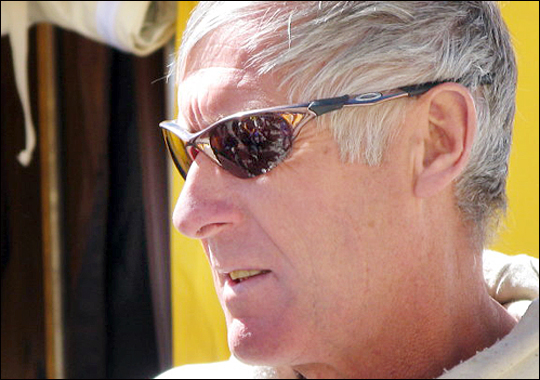

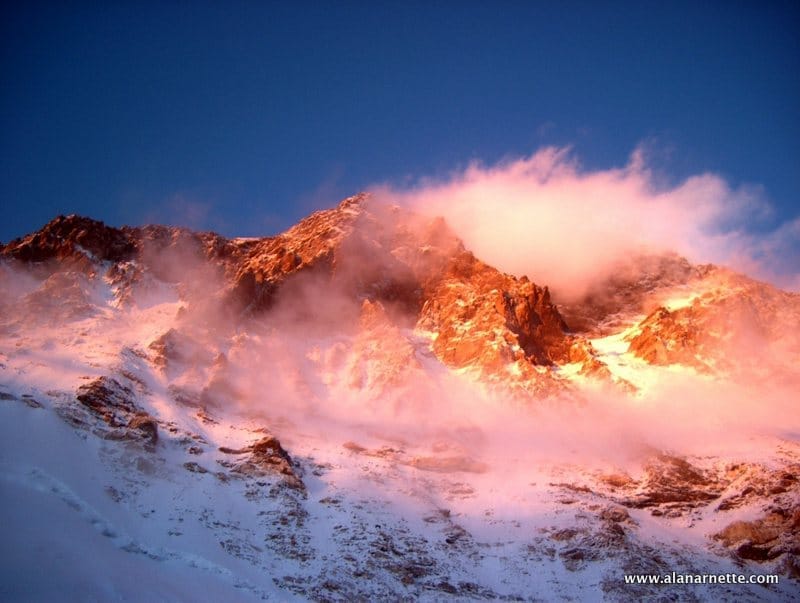
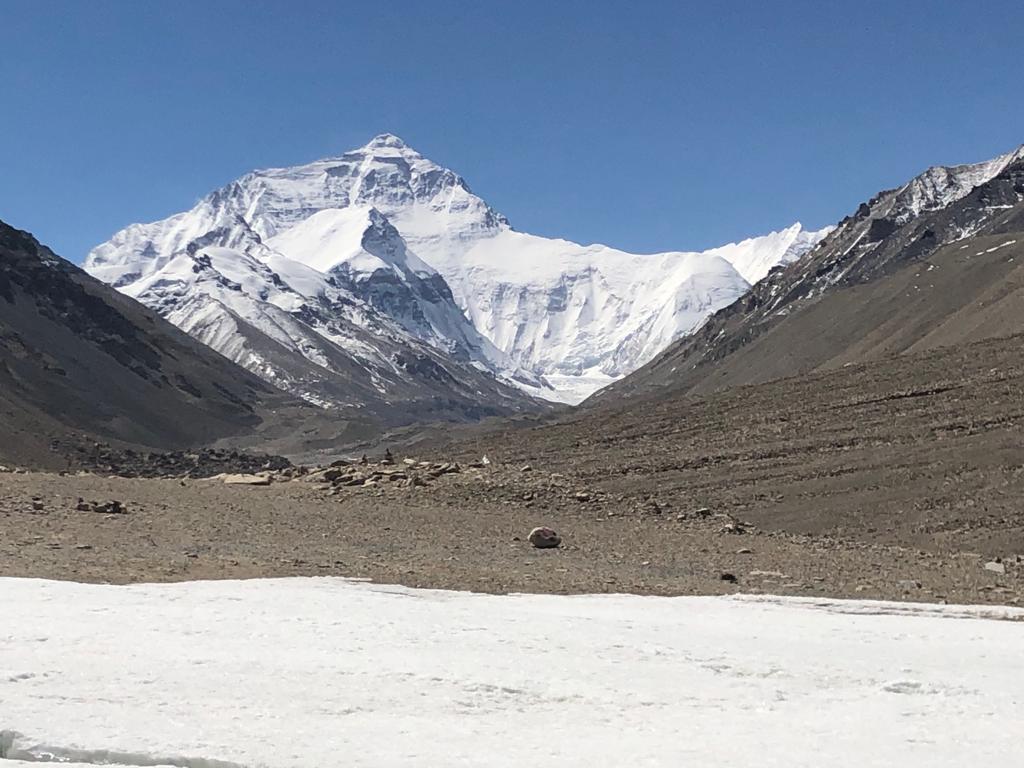
9 thoughts on “Everest 2017: Russell Brice “Old School” Prepares for Another Season”
Is sherpa Phurba Tashi submitting Everest this year !?
Summiting*
I don’t know Ayushi. I believe he will be with Russell Brice again, but like last year, he may choose not to climb. There are some high profile members with Himex that Phurba has summited with before so he may climb and when he summits would set the record for most summits. We will see!
Do I remember correctly, Alan, that in 2012, Russell pulled his team off because of his concern about the “West Ridge Serac” coming down? He was off, but by only two years, and that was a wise decision; putting lives first.
Correct George. In talking to Russ about that decision he said he was putting the safety of his staff and members first. I can tell you that he lost business in future years as a result and would do it again.
Sadly I am by no means contemplating summiting; I for one am satisfied with the trek in, the experience of standing at Crampon Point and looking up in awe is enough for me. ( Who am I kidding ? – of course I would relish the challenge, but I do not have the experience or the finances to summit) I’m going in three weeks for the third time. However, if I was ever able to experience the dream of going through the Icefall and higher, I can honestly say that I would be on a Himex Expedition. This man talks common sense and cares for his Sherpa’s and the mountain. Would love 10 minutes in his company at EBC this year.
Have a great time Paul, as I saw a trek to EBC will change your life … let it!
That’s one of the reasons I went to base camp the second time, althought I didn’t make it due to AMS, was hopefully to meet Russell, I have a lot of respect for him, I did feel agreaved for him and mark igles over the David sharp incident, and felt it was only a half truth that was broadcasted over that day, as Russell has always gone above and beyond to help distressed climbers on the mountains when it was never his responsibility to do so
Oh and you Alan (but I think you’d have been in the icefall)
Comments are closed.